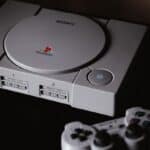A washing machine overflowing is a common problem. It can cause water damage to your home. Here are some quick solutions to help you fix the issue.
Troubleshooting a Washing Machine Overflow
1. Check the Drain Hose
- Kinks: Make sure the drain hose is not kinked or bent. This can block the water flow and cause an overflow.
- Clogs: Check the drain hose for clogs. Remove any debris or blockages.
- Height: The drain hose should be positioned at the correct height. It needs to be high enough to prevent water from flowing back into the machine.
2. Inspect the Drain Pump
- Clogs: The drain pump removes water from the washing machine. Check the pump for clogs. You may need to remove the pump to clean it.
- Damage: A damaged drain pump may not work properly. If the pump is damaged, you will need to replace it.
3. Look at the Water Inlet Valve
- Malfunction: The water inlet valve controls the water flow into the washing machine. If it malfunctions, it can cause too much water to enter the machine.
- Debris: Check the valve for debris or mineral deposits. Clean or replace the valve if necessary.
4. Examine the Water Level Switch
- Failure: The water level switch tells the machine when to stop filling with water. If the switch fails, the machine may overfill.
- Check for Damage: Inspect the switch for damage. You might need to replace it if it’s broken.
5. Consider the Pressure Switch
- Function: The pressure switch senses the water level in the washing machine. It can cause the machine to overfill if it’s not working correctly.
- Testing: Test the pressure switch with a multimeter to make sure it’s working.
6. Excessive Suds
- Type of Detergent: Using too much detergent or the wrong type of detergent can create excessive suds. These suds can cause an overflow.
- Use HE Detergent: If you have a high-efficiency washing machine, use HE detergent.
| Problem | Possible Solutions |
|---|---|
| Drain Hose Issues | Check for kinks, clogs, and proper height |
| Drain Pump Problems | Check for clogs, damage, and replace if necessary |
| Water Inlet Valve | Check for malfunction, debris, clean or replace if necessary |
| Water Level Switch | Check for failure, damage, and replace if necessary |
| Pressure Switch | Check for malfunction, test with a multimeter |
| Excessive Suds | Use the correct amount and type of detergent, use HE detergent for high-efficiency machines |
Preventing Washing Machine Overflows
You can take steps to prevent your washing machine from overflowing. Here are some tips:
- Use the correct amount of detergent. Too much detergent can cause excessive suds.
- Do not overload the washing machine. Overloading can put stress on the machine and cause it to malfunction.
- Check the hoses and connections regularly. Look for any signs of wear and tear.
- Clean the washing machine regularly. This helps prevent clogs and buildup.
- Leave the washing machine door slightly ajar when not in use. This helps prevent mold and mildew growth.
Why Your Washing Machine Is Overflowing
Insufficient Water Pressure Causing Drain Issues
Low water pressure can lead to unexpected washing machine problems. When the pressure falls below 20 PSI, the water inlet valve may not receive the signal to stop. This results in continuous water flow and potential overflow.
Older homes are particularly susceptible to this issue. Their plumbing systems were often not designed for modern appliances. Even if the overall pressure is adequate, aging or leaking pipes can cause localized pressure drops.
To check your water pressure:
- Purchase a water pressure gauge
- Attach it to an outdoor faucet
- Turn on the water fully
- Read the pressure on the gauge
If the pressure is below 20 PSI, consider:
- Contacting a plumber to assess your system
- Installing a water pressure booster pump
Faulty Pressure Switch Leading to Overflow
The pressure switch plays a crucial role in your washing machine’s operation. It signals the water inlet valve to stop once the desired water level is reached. A malfunctioning pressure switch can cause the inlet valve to continue supplying water, resulting in overflow.
Signs of a faulty pressure switch:
- Water continues to fill after the cycle starts
- Overflow occurs during the wash cycle
- Machine doesn’t start or stops mid-cycle
To test the pressure switch:
- Unplug the washing machine
- Locate the pressure switch (usually on the control panel)
- Remove the air hose and blow into it
- Listen for a clicking sound
- If no click, the switch may need replacement
Malfunctioning Water Inlet Valve
The water inlet valve controls the flow of water into your washing machine. When it fails, it can cause significant overflow issues and potential water damage.
Quick test for a faulty inlet valve:
- Start a wash cycle
- Let the machine begin filling
- Unplug the machine
- If water continues to flow, the valve is likely stuck open
Common inlet valve problems:
- Mineral buildup preventing proper closure
- Worn out valve components
- Electrical issues preventing valve operation
Inlet valve maintenance tips:
- Clean the valve screens regularly
- Check for leaks or damage during routine inspections
- Replace the valve if it shows signs of wear
By understanding these common causes of washing machine overflow, you can take proactive steps to prevent water damage and ensure your appliance functions correctly. Regular maintenance and prompt attention to any issues can save you time and money in the long run.
Fixing a Washing Machine Standpipe Overflow
Boosting Water Flow to the Appliance
A weak water supply can lead to washing machine overflows. Inspect the hoses connecting the machine to the water source for signs of wear. Damaged hoses often need replacement to prevent leaks and potential damage.
Before replacing hoses:
- Check manufacturer specifications for correct sizes
- Turn off hot and cold water supplies
- Disconnect old hoses (use a wrench if needed)
- Keep a bucket handy for spills
- Install new hoses securely
- Restore water supply
Swapping Out a Defective Pressure Switch
A faulty pressure switch can cause washing machine overflows. While DIY repair is possible, it requires some technical skill. Those unsure should consider professional help.
Pressure switch locations vary:
- Top-load machines: Behind water level control knob
- Front-load machines: May differ
Steps to replace:
- Remove water level control knob
- Open control panel
- Disconnect air hose from pressure switch
- Remove old switch
- Install new switch
- Reconnect air hose
- Reassemble control panel and knob
Installing a New Water Inlet Valve
The water inlet valve plays a crucial role in preventing overflows. If it’s malfunctioning, replacement is necessary. For top-load washers, access is gained by lifting the lid.
Replacement process:
- Disconnect power supply
- Shut off hot and cold water
- Remove screw holding fill valve
- Lift out fill hose and valve
- Disconnect all wires from old valve
- Install new valve
- Reconnect wires and hoses
- Secure with screw
- Restore power and water supply
Clearing a Clogged Drainpipe
Blocked drainpipes can cause water to back up and overflow. Regular cleaning prevents this issue.
To clear a clog:
- Unplug the washing machine
- Locate the drain hose
- Detach it from the standpipe
- Inspect for visible blockages
- Use a plumber’s snake to remove obstructions
- Flush with hot water to ensure clearance
- Reattach the drain hose securely
Checking the Washing Machine Drain Hose
A kinked or improperly positioned drain hose can lead to overflows. Ensure the hose is straight and properly inserted into the standpipe.
Hose placement tips:
- Insert 6-8 inches into standpipe
- Avoid pushing too far (can cause siphoning)
- Use a drain hose hook if available
- Secure hose to prevent movement during cycles
Inspecting the Detergent Dispenser
Overfilled or clogged detergent dispensers can contribute to overflow issues. Regular cleaning helps prevent problems.
Cleaning steps:
- Remove the dispenser drawer
- Soak in warm, soapy water
- Scrub with a soft brush
- Rinse thoroughly
- Dry completely before reinserting
By addressing these common issues, most washing machine standpipe overflows can be resolved. Regular maintenance and prompt attention to problems help ensure smooth operation and prevent water damage to your home.







